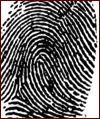|
|

|
|
|
|

|
When
you hear the words "technology" and "surfing"
in the same sentence, you might think of the internet before
you think of the ocean. But there are lots of resources online
to help surfers predict when the sweet swells are headed their
way. Find out just how waves are made, learn the basics of
making your own surf predictions
using weather data from the Internet, solve the physics mysteries
of surfing, and more!
|
|

|
You
see it on TV and in the movies. Now it’s becoming a
reality. Biometrics – using physical identifiers like
your retina, your fingerprints, even your voice to unlock
doors, access bank accounts, and ensure workplace security.
Explore
retinal scans, fingerprinting, and voice verification in
three
webcasts
, "Eye-D," "The Whirl Reports,"
and "Vox Unlocks," produced by a team of middle
school students from the Aim High Program.
|
|

|

|

|
Humans
and nature agree: Low-frequency sonar is the best way to find
things underwater. The problem is that while whales are using
sonar to search for food, the U.S. Navy is using it to search
for submarines. Whale activists say the technology interferes
with whale migration and their search for food. The U.S. administration
says that in the wake of September 11th, tracking submarines
is an issue of national security.
Learn
more
.
Be
sure to check out our archived
webcasts
about sonar and animals.
|
|

|
DNA
isn't just for fingerprinting people anymore. An Australian
vintner has recently started using grape DNA in the labels of
its most expensive wine. The move is a response to a rise in
the number of wine swindlers switching the contents of some
bottles, leaving investors duped until it comes time to uncork
the wine. The technology began as a way to validate tickets
for the Sydney Olympics, and might also be useful in validating
a wide range of items.
Learn more
.
|
|

|

|

|
This
island in the North Sea may seem a bit medieval, but it's
just the right size to support some modern technology experiments.
The country is leading the way in cell phone innovations and
alternative energy. And its controversial nationwide genetic
database is a treasure trove for genetic researchers, its
volcanoes are studied by researchers around the world, and
its shifting magnetic fields play tricks on compasses.
Learn
more
.
|
|

|
For
nearly 500 years, people have stared at "the lady with the mystic
smile"—and been baffled by her—especially by her smile's
apparent tendency to fade, even disappear, and then return.
Now,
Harvard
neuroscientist Margaret Livingstone claims to have solved the
Mona mystery.
|
|

|

 is a collaboration between the Exploratorium and
The
World
from Public Radio International.
is a collaboration between the Exploratorium and
The
World
from Public Radio International.
It is funded by the
National Science Foundation.
Subscribe
to Exploratorium e-news

|







![]()


